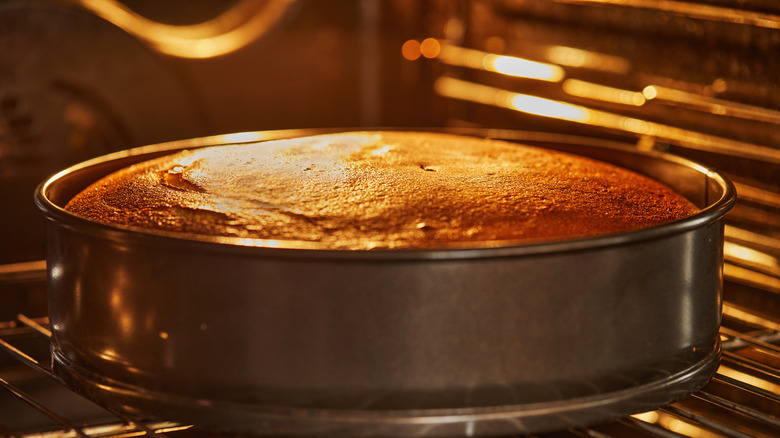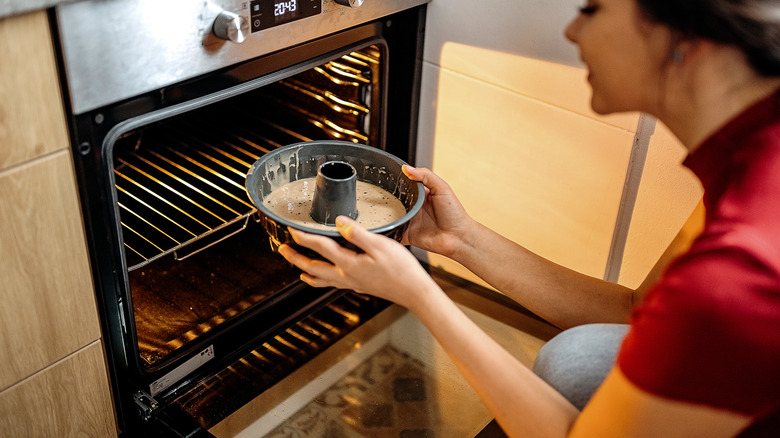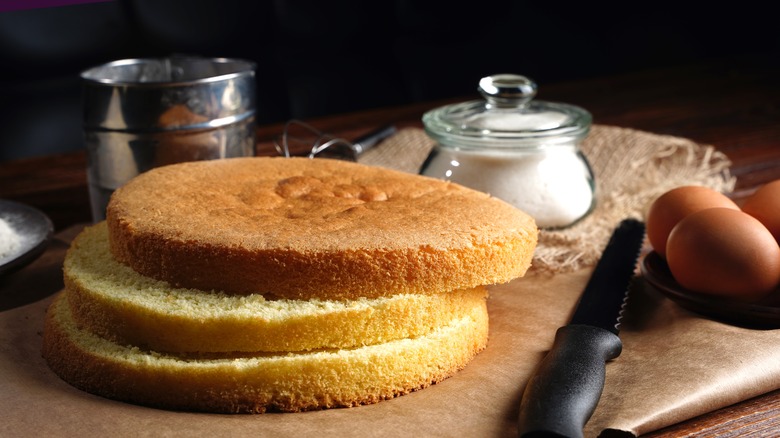Why It's So Important To Bake Cakes On The Center Oven Rack
Making a cake can be a joyful task, but there are a few missteps that can really burst your baking bubble, like an unevenly baked or totally burnt finished product. To help avoid those particular faux pas, a go-to rule is to always bake your cakes on the center oven rack. Using the center rack ensures that all sides of your cake, including the top and bottom, will have equal opportunity when it comes to heat access, and evenly distributed heat translates to a consistent bake all around.
Convection ovens are especially well suited to baking and help this process along. The heat source for a conventional oven is located either on the top or bottom of the oven. A convection oven has heat sources throughout the oven, plus a fan at the back of the unit that circulates the hot air throughout the bake, so it swirls around your cake and reaches all sides, as well as top and bottom. That said, regardless of your style of oven, you can still create a perfectly baked cake by keeping a few tips in mind.
Choosing the right rack for baking
Even in a convection oven, the temperature will fluctuate over time and in different spaces. The middle rack is a relatively safe bet for most baked goods, and cakes aren't the only item that does well with this placement. Everything from cookies and brownies to casseroles, baked chicken pieces and potatoes, and pasta dishes all thrive in this position. But this advice isn't one-size-fits-all: Rack selection depends on what you're hoping to achieve.
When it comes to baking a fluffy, consistently tender cake, it's important to consider the composition of your creation. If you're making thinner cake layers (less than three inches), the middle rack is a good place to start, as it won't receive overly intense heat from the top or bottom. For thicker cakes that rise above the 4-inch mark (including bundts like a sour cream pound cake and angel food cake), it's best to position them in the lower third of the oven, which means the center and top of the cake will receive the more even heat that exists in the center of the space. Similarly, a chiffon cake requires more heat from beneath so that it can achieve the right rise without a resulting burnt top.
Baking cakes and rack rotation
Of course, it's common — especially when entertaining — to call on your oven to do double duty, or even triple. In cases when you need to bake multiple items at the same time, it's helpful to stagger the placement of your dishes to allow airflow and avoid crowding.
If you're baking a two-layer cake, it's a relatively simple fix: Just place the pans side-by-side on the center rack, which should ensure an even bake between them both. If you have an additional layer, place two side-by-side on the bottom rack and the third on the middle, staggered between the two lower layers. This helps to make sure you'll have airflow between the layers.
Furthermore, rotate the layers throughout the course of baking and make sure each has an equal amount of time in each position. Be sure to also turn each layer 180 degrees while you're at it. If the top of your cake comes out too pale, it's an indicator that this portion probably didn't get a chance to enjoy the heat. Just take care not to rotate too soon — wait until about halfway through your baking time to make a move. Taking these steps should give you peace of mind that your final result will be a delicious, evenly-baked cake.


